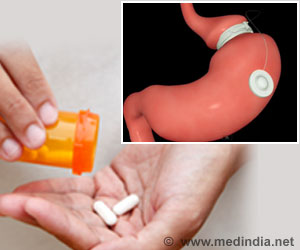Robotically assisted coronary artery bypass grafting (CABG) surgery is a rapidly evolving technology that shortens hospital stays and reduces the need for blood products.

For CABG, or bypass surgery, a surgeon uses a section of vein, usually from the patient's leg, or an artery from inside the patient's chest, to create a new route for oxygen-rich blood to reach the heart. It is performed to improve blood flow to the heart muscle caused by the build up of plaque in the coronary arteries (atherosclerosis). The robot offers several technical advantages to surgeons including a magnified 3D view of the patient's heart, as well as the elimination of any kind of tremor, which makes for precise incisions. For this study 300 patients (men and women 60 years or older) underwent robotically assisted CABG at three hospital sites. In addition to the Vancouver General Hospital, the study was undertaken at the London Health Sciences Centre, led by Drs. Bob Kiaii and Michael Chu, and at Montreal's Sacred Heart Hospital, led by Dr. Hugues Jeanmart. There were no deaths in this group of patients, with only one patient developing a deep wound infection after the procedure. The doctors performed the surgery using the da Vinci Surgical System. It consists of a "surgeon console" where the surgeon views a high definition 3D image inside the patient's body.
When the surgeon's fingers move the master controls, the system's "patient-side cart" springs into action with three or four robotic arms mimicking the surgeon's hand, wrist and finger movements with surgical instruments. With traditional CABG the average hospital stay is five to six days. With the robotically assisted surgery, that was cut to an average of four days in the group of patients having surgery at London Health Sciences Centre; the hospital with the greatest experience with robotically-assisted cardiac surgery in Canada. There was also less blood loss, which translated into a lower need for blood products.
The more precise incisions also mean less cosmetic scarring. Patients from the study reported being back to near normal levels of activity within a couple of weeks. With standard CABG, patients are asked to avoid driving or lifting any weights over 10 pounds for six weeks. "Each year nearly 25,000 bypass surgeries are performed in Canada,; it is the most common form of surgery for people with heart disease," says Heart and Stroke Foundation spokesperson Dr. Beth Abramson, author of Heart Health for Canadians. "Surgery saves lives and helps improve quality of life. The safer we can make the surgery, the more lives we can save."
She adds that bypass surgery doesn't cure the underlying heart disease. "Health behaviour changes and medications as prescribed by your healthcare providers are critical to preventing further damage. "Currently, 17 centres across Canada use this robotic technology for surgery. However, they are used primarily in the fields of urology and gynecology. Dr. Cook and his colleagues hope findings from this study will increase the use robotically assisted heart surgery.The Canadian Cardiovascular Congress is co-hosted by the Heart and Stroke Foundation and the Canadian Cardiovascular Society.
Source-Eurekalert












